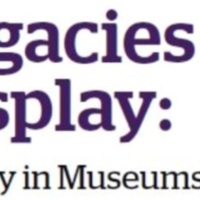
The National Great Blacks in Wax Museum
The National Great Blacks in Wax Museum opened in 1983. It was set up by Drs. Elmer and Joanne Martin as a cultural and educational institution that focusses solely on the study and preservation of African American history. It is a unique organisation as it represents the histories it interprets through the use of life size wax figures, presented in historical settings. The museum has several objectives, including to increase interest in African American history, to use inspiring examples from history to motivate young people to achieve, and to improve race relations by dispelling myths of racial inequalities. The museum attracts around 300,000 visitors annually.
The museum features thirty-five installations of 'great blacks' in a range of scenarios. These cover a large temporal and geographic span, beginning with representations of key figures in pre-slavery Africa, through to dioramas of the space race and modern science. The key focus is on black achievement through all sectors of society, including politics, the military, sport and business.
Many of these installations link to the history of slavery in the United States. They examine the Middle Passage and captivity, plantation life and resistance with graphic displays of the instruments of brutality utilised in the system of enslavement. Others depict key characters in African American journeys to freedom including Henry 'Box' Brown and W.E.B. Dubois. The abolition movement is incorporated into the installations with the characters of Frederick Douglass and Sojourner Truth. The Underground Railroad is also depicted in a display with Harriet Tubman, amongst others. Many of these dioramas also incorporate models of children.
The displays continue to chart the twentieth century, examining the Civil Rights Movement, Black Power, and the Jim Crow Laws. Some of these dioramas illustrate the abhorrent nature of the racial violence that dominated the United States, such as lynching, in graphic detail.
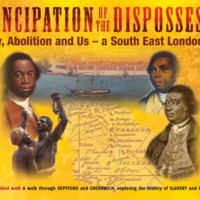
Emancipation of the Dispossessed: Slavery, Abolition and Us - a South East London angle
Emancipation of the Dispossessed was a local community project exploring the local history of Deptford and the surrounding areas and the connections with the transatlantic slave trade. Community groups and students from Lewisham College worked with theatre educators to research and develop 'Blood Sugar', a promenade performance through the Queen's House, Greenwich. The play, written and directed by John Turner, tells the story of slavery and abolition from a local angle, and the script was built around first-hand and eyewitness accounts, campaign pamphlets and reports to parliament. The project also produced learning resources aimed at Key Stage 3 History and Citizenship.
A guided walk explored Deptford’s links to the history of the transatlantic slave trade, uncovering stories of some of the local people who played an important role in the beginnings of the slave trade or the campaign for its abolition. London was an important slave trading port before Bristol and Liverpool dominated the trade. The trade and British colonies were protected by the Royal Navy, whose ships were built and prepared for voyages at the Royal Dockyards at Deptford.
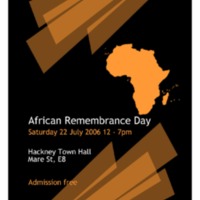
The Ligali organisation, 2007
Ligali is a Pan-African human rights organisation that challenges the misrepresentation of African people, culture and history in the British media. It produced various responses to promote the African perspective of the 2007 bicentenary, including their 'Declaration of Protest to the 2007 Commemoration' expressing dissatisfaction with much of the terminology and focus of the 'official' commemorations. Their particular focus was on the ‘Maafa’, derived from the Kiswahili word meaning ‘great disaster’, and referring to the ongoing impact of enslavement and colonialism for African peoples. The publication ‘Addressing Maafa denial and slavery apologists’ was a guide to promoting the truth about the Maafa from an Africentric position.
‘Maafa: Truth 2007’ is a documentary film directed by the Ligali founder, Toyin Agbetu, and produced by Ligali’s then head of media affairs, emma pierre. The film confronts some of the myths about British slavery, featuring contributions from community activists, project workers, teachers and the African British business community. The film was screened at various events, including African Remembrance Day at Hackney Town Hall in 2006. Ligali’s ‘Freedom Fighter’ stamps were designed by Emma Pierre-Joseph as a response to the Royal Mail’s publication of six stamps to mark the bicentenary. ‘The Walk’ is a documentary record of Toyin Agbetu’s protests at the service at Westminster Abbey to mark the bicentenary on 27 March 2007.
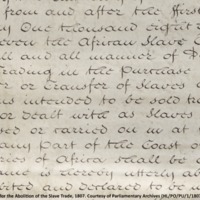
Inhuman Traffic: The Business of the Slave Trade
An exhibition at the British Museum exploring how the transatlantic slave trade functioned. The display examined the commodities involved - tobacco, guns, textiles, sugar, rum - and the ways in which Africa, Europe and the Americas were linked in a global trade network. The exhibition also looked at resistance leaders including Toussaint L'Ouverture, Olaudah Equiano and Nanny of the Maroons, and their struggles to end enslavement. The exhibition was accompanied by a varied public programme at the museum exploring the legacy of the slave trade as part of the Atlantic Trade and Identity season, featuring film screenings, panel discussions, seminars and lectures.
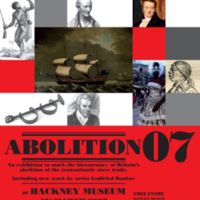
Abolition 07
Hackney Museum's Abolition 07 exhibition told the story of British involvement in the transatlantic slave trade, the resistance to it, and its abolition, and in particular emphasised the involvement of Hackney's residents in the abolition movement. The display included new artwork by Godfried Donkor in collaboration with young Hackney artists. A film of interviews with Hackney residents, Hear My Voice, was produced. Over 1200 children from Hackney Primary Schools took part in poetry workshops at the museum with poets Adisa and Baden Prince. Their poems and responses were published in the booklet 'And Still I Rise'.
The research into Hackney's connections to the transatlantic slave trade continued in 2013-2015 with 'Local Roots / Global Routes', a collaborative project between Hackney Museum and Archives and the Legacies of British Slave-ownership project.
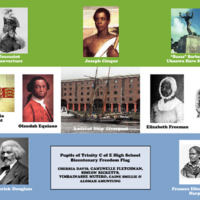
Bicentenary Freedom Flag
The Bicentenary Freedom Flag was displayed alongside an exhibition about Wartime Black History at Manchester Town Hall. The project was a collaboration between staff from Manchester City Council Corporate Services Black Staff Group and pupils of Trinity Church of England School in Manchester. The flag recognised the work, struggles and sacrifices of those who brought the slave trade to an end, and featured images of prominent individuals on the background of the Sierra Leone flag. Those featured on the flag included Toussaint L'Ouverture (General of the Haitian Uprising), the abolitionist Olaudah Equiano, the anti-slavery orator Frederick Douglass, the statue in Barbados of 'Bussa', the unknown slave, guide of the Underground Railroad Harriet Tubman, and Joseph Cinque, leader of the Amistad slave ship revolt. The accompanying exhibition included pupils' articles and creative writing. It also examined the history and role of the West India Regiments, British colonial infantry regiments largely recruited amongst freed slaves from North America and slaves purchased in the West Indies.
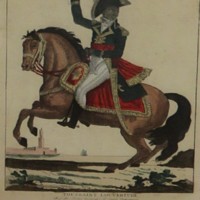
Freedom Think Tank
Freedom Think Tank was a time limited Black-led voluntary group established to influence the agendas of organisations in the North East commemorating the bicentenary of the abolition of the slave trade. The group also organised commemorative events, focusing on themes of promoting social solidarity and raising awareness of the participation of Black people in abolition.